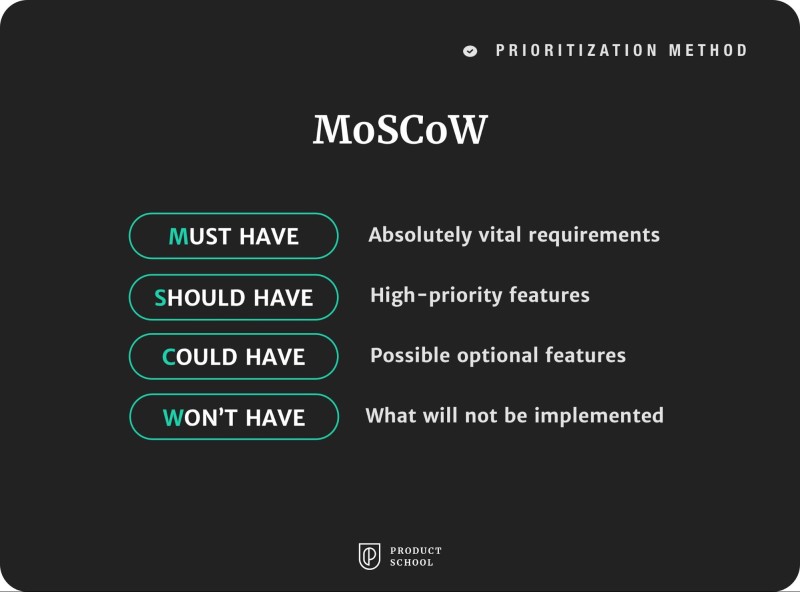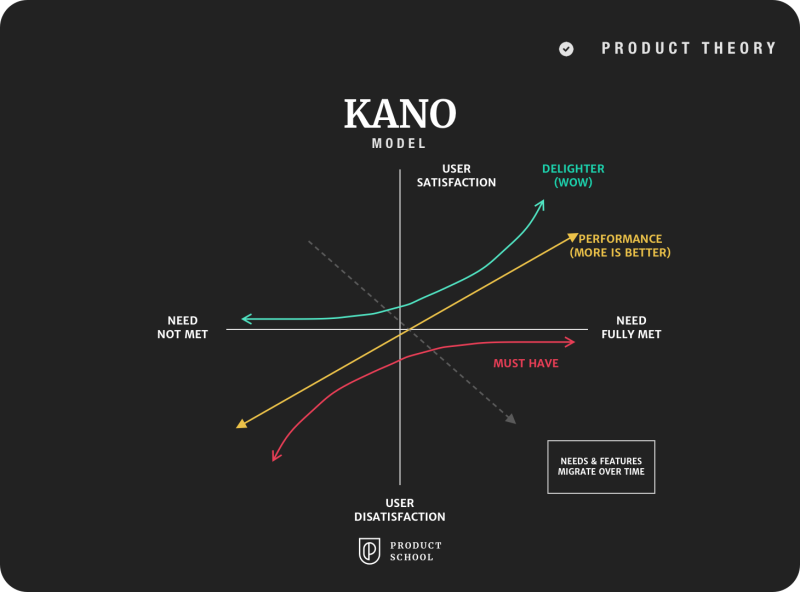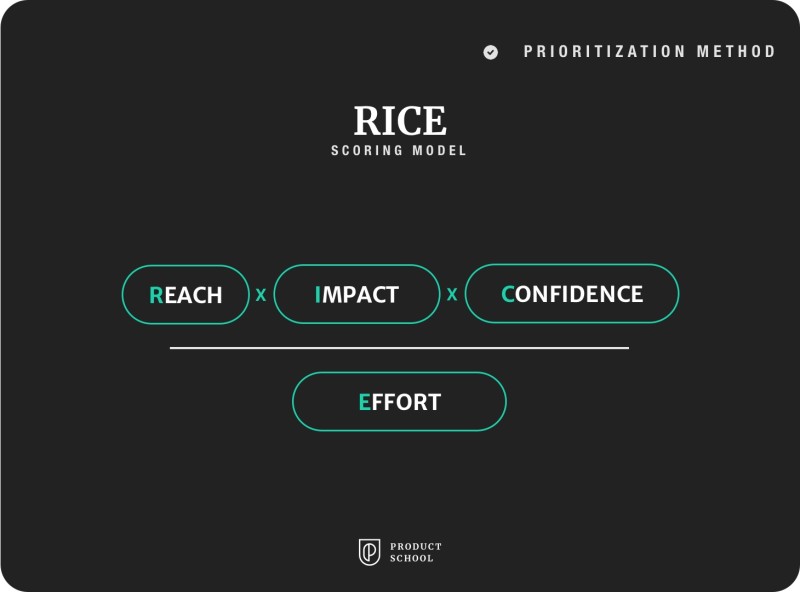
Before becoming product professionals, everyone thinks they know how to prioritize. If you’re an aspiring Product Manager, maybe you think you’ve got top prioritization skills. Almost all kinds of work and studies require the prioritization of tasks.
Then you land in the product world and realize that you need to know the difference between what’s important but not urgent, and what’s urgent but not important. The engineers are telling you one thing, and management is telling you another.
It’s a whole different ball game.
Even if you’re a seasoned professional, excellent prioritization remains something of a mystery. It takes years of practice, trial, and error.
Luckily, the global product community has blown up in the last few years, and product leaders from big tech companies are eager to share their secrets.
And there are so many resources out there for you to learn from.
Let’s take a look at what prioritization means for product people, the techniques all Product Managers should know, and strategies from experts at Google, Amazon, and Microsoft.
What does Prioritization Mean?
Prioritization, for Product Managers, involves deciding which features are a priority.
As the leader of a product team, you only have so much time and so many resources to build your product.
You might have 3 potential features in the works, but the launch is looming, and you can only do one of them well.
One of them is being ‘gently suggested’ by a very important stakeholder, one of them is pretty boring. Still, your users are asking for it, and another is really innovative, but you have no data to prove it’ll help you grow.
Tough call? Well, as a Product Manager, it’s your call.
Working with other team members, you’ll decide which of these features should be done right now, which should be shelved for another day, and which one should effectively be scrapped.
There are various time-tested techniques that are standard across many industries.
Before you develop your own technique, it’s a good idea to start out with the basics. (If you’re already a seasoned Product Manager familiar with the basics, skip ahead to see how the PMs from Google, Amazon, and Microsoft get prioritization done.)
Prioritization Techniques All Product Managers Should Know
1. The MoSCoW Method

The MoSCoW method, which is also known as the Moscow Prioritization Technique, is commonly used in Agile PM to understand what’s important and what’s not.
Download now: Get our 5-minute guide on How to use the MoSCow Prioritization Technique
It breaks down features into 4 categories: Must have, Should have, Could have, and Won’t have.
Must have: these are the features your product absolutely needs in order to do what it claims. For example, a must-have feature for Spotify would be the ability to create playlists...or even the ‘play’ button itself.
Should have: is for things that it’s better to include, but you’re not doomed without them. These are left out of a first iteration more often than not, but become the first priority when planning V2 or updates.
Could have: things that would be nice to have, but only if you have the time and resources.
Won’t have: for many PMs, this category is for the things that you just want to shove out of your way so you can get on with more important things.
It doesn’t mean they won’t be revisited in later versions, it just means definitely not this version.
This method is particularly popular because it’s very clear and easy to understand, making it the perfect tool for stakeholder communication.
2. KANO Model
Slightly less easy to understand at a glance is the KANO model:

Graphic by Dan Olsen*
Using the KANO model, you can plot your features on the graph and place them under 3 categories:
Delighters: Features which add to your USP, are seen as going ‘above and beyond’ by customers.
Performance features: Customers respond well to high investments in performance features.
Basic features: The bare minimum requirements to get the job done. Customers will be quick to abandon products without them.
3. RICE Scoring
RICE Scoring is especially popular with maths-minded product people. It’s an algorithm which helps you to calculate a score that, theoretically, tells you how important your feature is.

Start calculating your RICE score, by breaking down the feature’s Reach, Impact, and Confidence. Then calculate the Effort it would take to implement it.
Reach: Calculating reach helps you to understand how many people will actually be affected by the feature, and helps you to avoid bias towards features liked by you and your team. Estimate how many people the feature would impact in a given time period. Depending on your product this could be Monthly Active Users or quarterly customers.
Example: This feature has a one-time effect on all of our monthly customers ≈ 2000
Impact: Impact is more subjective, as there’s no scientific way to measure it. The general rating system looks something like this:
3 - Massive Impact
2 - High Impact
1 - Medium Impact
0.5 - Low Impact
0.25 - Minimal Impact
Once you’ve been working with RICE for a while, you may find a different rating system to be more helpful.
Confidence: Another ‘unscientific’ metric! Listen to your gut (and the data!), and give yourself a percentage. It might look something like this:
100% - Extremely high Confidence
80% - Medium Confidence
50% - Low Confidence
<50% - Wing-and-a-prayer
Effort: Estimated in ‘person-months’ - which means the hours of work one team member can do in a month - effort is what you’ll use to divide your other scores. This will give you your RICE score!
Comparing your scores across different features/projects will give you a better idea of how they stack up against each other. You may prefer to prioritize those with the highest score first, and work your way down the list to those with the lowest score. Or you might set a baseline score, which all features/projects must meet in order to even be considered.
RICE isn’t just useful for prioritization, it’s also a useful exercise for when you’re faced with multiple solutions to one problem. You can apply RICE to help you better choose which route to take.
Google’s Customer-Focused Prioritization
Jeff Betts, a former Product Manager at Google, takes a customer-centric approach to prioritization.
To build the best solutions, Product Managers need to understand why they are building, and for who. For Betts, Product Management is about problem-solving, which starts with understanding the market, who your customers are, and what they need.
The same starting point is needed for good and effective prioritization.
Personally, Betts recommends using Blue Ocean Strategy, which is based on “simultaneous pursuit of differentiation and low cost to open up a new market space and create new demand. It is about creating and capturing uncontested market space, thereby making the competition irrelevant.”
He also references Dan Olsen’s approach to prioritization in The Lean Product Playbook. Having a defined product vision is good Product Management 101. But the Lean Product approach develops a product vision into a mantra.
A mantra deals more with the day-to-day question of ‘why are we building this product?’ which aids prioritization by keeping teams aligned on why you’re making those decisions. If a feature/project doesn’t line up with the mantra, it shouldn’t be the priority.
Teams at Google, notably Google Play, use the concept of a North Star Metric which originated in Silicon Valley and is often used as short-hand for ‘why we’re building what we’re building.’
The North Star Metric tactic, also involves building your priorities around your why. Your North Star Metric can be any one metric which gets the users closer to solving their problem.
For example, if you have a job-hunting app your North Star Metric might be how many users tap on ‘Apply Now.’ You would then make prioritization decisions based on what would help users do that.
Amazon’s Focus on Customer Experience
Jeff Bezos famously said, “Customers are always beautifully, wonderfully dissatisfied, even when they report being happy and business is great.” What that leaves Amazon’s Product teams with, is endless opportunities for innovations.
There is always a way to make your product better and provide an improved customer experience.
Asal Elleuch, a Senior Product Manager at Amazon Prime, states that prioritization is a never-ending and iterative process.
“It is constant if you are committed to delivering value. I make decisions on priority based on the impact to customer experience (am I solving a problem and if yes, how big is this for the customer?), the impact to key business metrics, and the level of effort or cost of getting this done.
As a PM, you may face the situation where ROI is hard to justify for smaller projects, but, if smaller projects are an incremental step towards a vision, then looking into the future enables value and decides priority.”
Another Amazon Senior Product Manager, Karan Peri, reminds us that Amazon is a big company, and there’s no one way to prioritize.
“It depends on the type of product (consumer, enterprise, for sellers), stage of maturity of the product, customer needs, etc. But, in general, we work backward from top customer needs balanced with business goals, mostly long-term.”
Microsoft’s OKRs for Roadmap Prioritization
Salah Ahmed, a Product Manager for Microsoft, uses OKRs to help with roadmap prioritization and planning.
OKRs are a common tool used by companies with many different branches, sister companies, and products. Short for Objectives and Key Results, they help to keep the goals of a team or product aligned with those of a company. They are also popular for their ability to provide accountability and transparency across different teams.
They’re a great tool for communicating with stakeholders. You can cut back the why’s, what’s, and how’s, and just show them the metrics that matter. They’re a great way of quantifying the progress you’ve made and what you’ve achieved.
So how do you set great OKRs? According to Salah, it’s all about making sure your objectives are SMART:
Specific
Measurable
Attainable
Relevant
Timely
OKRs are incredibly common in Product Management. They’re basically Product Management 101! Sometimes mid-level Product Managers rush to look for a new and shiny way of prioritizing features. But just because OKRs are an “entry-level” prioritization method, that doesn’t mean you can’t use them throughout your career. If they’re good enough for Microsoft, they’re good enough for you!
Salah also highlights the importance of the communication aspect of using OKRs in prioritization. Communicate your roadmap to your partners and to your customers, but make sure to know your audience! Tailor your roadmaps depending on who will see them. Experts advise that the priority order of your tailored product roadmaps is as follows:
Engineering
Sales/Customer Success
Other teams
Senior Management
We all know that roadmaps are never set in stone! By communicating these roadmaps to different groups, you can gather feedback on them, which can help refine your priorities.
Why is Prioritization So Hard?
Prioritization is something that tech and product people struggle with at all levels! When you’re faced with a list of unprioritized features, it can feel like you’re an artist staring at a blank canvas. Where to begin?
What we see across all prioritization techniques, and indeed what we hear from all manner of product people, is that the best techniques focus on your customers.
Yes, it’s important to factor in things like time, budget, effort, stakeholder needs...but by remembering who you’re building for and why, you’re already giving yourself a powerful driving force behind your prioritization decisions.
Meet the Author

Carlos González de Villaumbrosia has over 10 years of experience building teams and digital products in the US, Europe, and Latin America.
Carlos founded Product School in San Francisco in 2014. Today, the company is the global leader in product management training with 20 campuses worldwide and a live online campus.
Designed to fit into work schedules, classes are held in the evenings or on weekends. All the instructors are real-world product managers, working at renowned tech companies like Netflix, Airbnb, Google, Facebook, Amazon, and Paypal.
In addition to individual classes, Product School also delivers custom corporate training programs to Fortune 500 companies seeking to upskill their existing teams or onboard new talent.
Carlos is committed to pushing the product community forward. With this aim in mind, he published the Amazon bestseller, The Product Book.
He also hosts Proddys - the annual awards honoring the best software products -, produces ProductCon - a multi-city conference attended by tens of thousands of product managers every year - and helps organize over 1,000 free events every year in 200 cities around the globe.

Carlos González De Villaumbrosia

Read also






Prioritize with confidence

Experience the new way of doing product management



